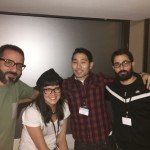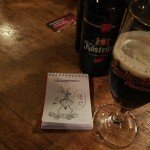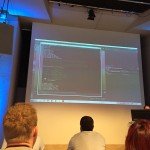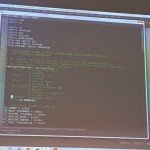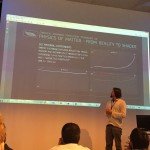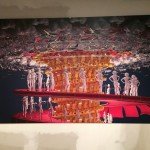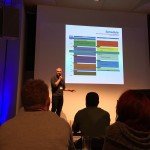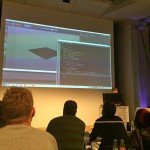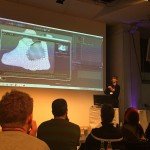Syfy/Chiller has consumed much of my focus and creative energy. As my project page shows I’ve been busy working on numerous show opens, brand concepts, and ad-sales projects. I’d say that with these new projects, I’ve developed a keener workflow to balance deadlines vs quality. This workflow is continually being defined and tweeked because I’m always developing new processes to working efficiently while retaining quality. With that said though, it’s important to me that I continue to work on my own personal creative so adopting a workflow that I can use both on and off the job always remains an initiative that I always look on refining.
Over the winter I had the opportunity to attend the C4DAPT2 seminar held in Berlin and was able to pick the brains of some of the highest-level caliber talent in the motion design industry today (e.g., Simon Holmedal, Yader, Raphael Rau, Simon Fielder, Pingo Van Der Brinkloev.) These guys are all kindred souls, it just felt right to be able to talk shop about next-level 3D topics as if I was talking about a TV show with a friend.
It was really inspiring to listen to the lectures and discussions of Cinema 4d production at the highest level concerning mograph topics such as python scripting, fluid simulations, rendering and lighting. I’ve been playing around with smoke and flame simulations so I picked up some valuable insight from Simon Fiedlers lecture regarding TFD.
The biggest takeaway is:
Simon Holmedal’s discussion regarding python and xpresso served to re-inforce the idea that a project obtain a level of quality that can only be reasonably achieved through the ultization of these tools (no messy timelines, hundreds of hard inefficient keyframes, etc). While I have utilized Xpresso for projects (Sonic + Syfy adsale, Rosebowl), python is still an area that for now remains a bit murky for me.
Niklas Rosenstein further re-inforces the value of python scripting by essentially programming a plugin within his talk, while it was a dry listen it is a valuable talk in that there are very few resources that actually cover the topic of C4D plugin development. I would recommend one to purchase the C4DAPT2 talk from Vimeo if you’re interested in understanding what the process behind programming a plugin would be.
Raphael Rau’s tips concerning rendering methodologies and render engines. A favorite render engine discussed was Octane which I believe will become more widely adopted by production studios in the next 2 years. Currently most studios and render farms have been built around CPU-based render engines (Vray, Physical) so the costs to switch over to a GPU based production model utilizing Octane or any GPU based render engine hasn’t been fully implemented, but I believe the GPU based rendering is superior and will become the de-facto render method going forward.
I am currently reseraching and gearing my own production methodologies that utilizes a GPU based render engine. I believe this will not only save me a massive amount of time, but it will elevate my level of work because of the instant IPR-like feedback and very good render solutions. More on this in a future post.
Here’s a few pictures of C4D APT2 mostly:



